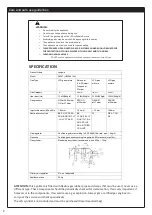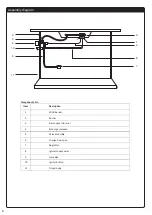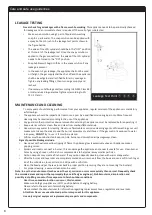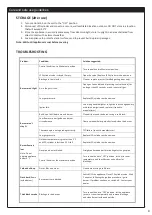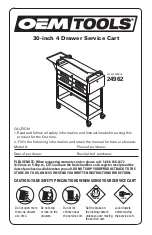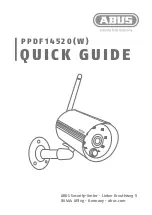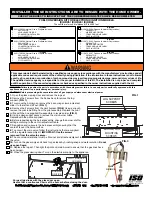
8
Care and safe use guidelines
LEAKAGE TESTING
Never check for gas leakages with a flame or while smoking. This appliance needs to be periodically checked
for leakages and an immediate check is required if the smell of gas is detected.
•
Make a soap solution using 1 part of liquid dish-washing
soap to 3 parts water. The soap solution can be applied with
a spray bottle or brush to the leakage test points shown in
the figure beside.
•
The valve of the LPG cylinder should be in the “OFF” position
at this point of the leakage test. Once the soapy solution is
applied to the gas connections, the valve of the LPG cylinder
needs to be turned to the “ON” position.
•
Soap bubbles will begin to form in the soapy solution if any
leakage is present.
•
In the event of gas leakage, the appliance shall not be used
or if alight, the gas supply shall be shut-off and the appliance
shall be investigated and rectified before it is used again.
Tighten any leaking fittings, then turn on gas supply and
recheck.
•
If necessary, substitute gasket (according to EN 549 Class B2)
or material used to guarantee tightness (according to EN
751-1 Class I).
MAINTENANCE AND CLEANING
To enjoy years of outstanding performance from your appliance, regular services of the appliance is mandatory
as followings:
•
The appliance should be inspected at least once a year by a qualified service engineer only. More frequent
cleaning may be required according to the use of the appliance.
•
Any guard or other protective device removed for servicing the appliance must be replaced before operating it.
•
Keep exterior surfaces clean, free and clear from combustible materials.
•
Use warm soapy water for cleaning. Never use flammable or corrosive cleaning agents. While washing your unit
makes sure to keep the area around the burner assembly dry at all times. If the gas control is exposed to water
in any way, DO NOT try to use it. It must be replaced.
•
Airflow must be unobstructed. Keep controls, burner and circulation air passageways clean.
Signs of possible blockage include:
•
Gas odour with extreme yellow tipping of flame / Appliance glow is excessively uneven / Appliance makes
popping noises.
•
Spiders and insects can nest in burner, this can damage the appliance and render it unsafe for use. Clean burner
holes by using a hoover, soft brush or compressed air to help clear away smaller particles.
•
Carbon deposits may create a fire hazard. If any carbon deposits develop, clean with warm soapy water.
•
After the burner and lava rocks are completely cooled down, remove it from the bowl and use a soft brush to get
rid of the mild stains, loose dirt and soil. Wipe with a soft cloth.
•
Clean the bowl and put the lava rocks back in proper position (ensuring they are not covering the burners).
•
For proper cleaning, a vacuum cleaner can be used.
Note: In a salt-air environment (such as near the sea), corrosion occurs more quickly than normal. Frequently check
the corroded areas and repair them promptly (by a certified gas engineer). Stubborn stains, discoloration and
possibly rust pitting can occur from exposure to harsh outdoor conditions.
Over time, some discoloration can occur, this is normal.
Make sure both gas supplies are in OFF position before changing battery.
Please refer to the process of assembling battery.
Please contact the Manufacturer for information regarding replacement hoses, regulators and lava rocks.
Attention: Never use unauthorized parts or component for this appliance.
Use only original equipment replacement spare parts and components.
Leakage Test Point
①
②
③
④


